
 |
Summer eveningPhotographed on 1 August and 22 August 2004 |
|
In my quest to show a personal, honest, resident's view of York, I've included many photos of the scruffy corners, the derelict areas and even the graffiti. Sometimes I was so involved in the project that I forgot about those moments you have when you're not wandering about with a camera thinking about getting photos for a website. I was making the most of the evening light, and visited a few places I'd been wanting photos of. I was in a rather scruffy yard off Tanner Row, taking a photo of a date on a drainpipe (yes, what a glamorous life!) When I turned around I saw this image on the right. Beyond the rather dark and depressing yard, across the road, the spire of All Saints, North Street, lit by the evening sun. A few more images follow, of York's buildings catching the golden glow of summer evenings, and reflecting them back at us, beautifully. The photographs on this page were taken on two evenings – 1 August and 22 August 2004. |
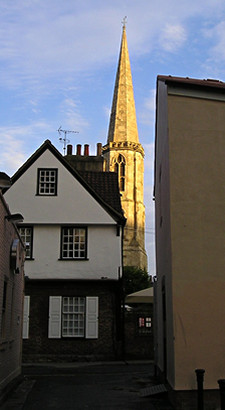 |
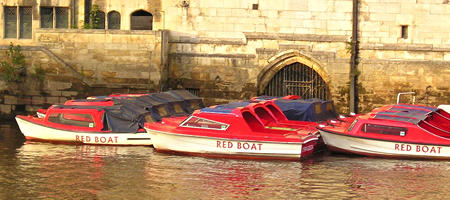 |
Guildhall buildings and boats, at sunset, 22 August 2004 |
|
Marygate, off Bootham, with its shy phone box behind Marygate Tower, and its golden distance, enticing you to wander down to the river (possibly stopping for a pint at the Minster Inn on the way). |
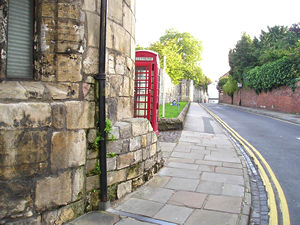 |
|
'The visual wealth of York is in the secular city itself,
one of the richest and most complex townscapes in the world. It is the
most medieval in feeling of all English cities, a city of streets rather
than spaces, and its streets are so narrow and bent to close all vistas
and lead the walker round corners – so that the only wide and straight
ones (Parliament Street and Piccadilly) seem alien both in name and nature.
Curves are free and non-geometrical with the sole and therefore striking
exception of St. Leonard's Place. The scale is minuscule and pedestrian,
and exaggerates the size of vehicles; it conspicuously enhances the importance
of man. Materials are dark and rich – York stone, slabs, cobbles, timber
and crimson brick, blackened or (where cleaned) ochrous limestone, vermilion
and black pantiles, bravely lettered walls, shining slate roofs.' |
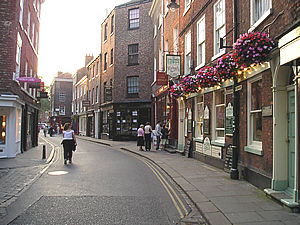 |
|
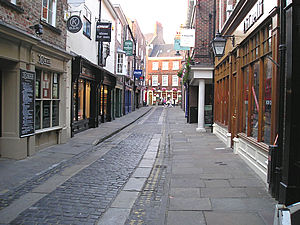 |
|
York Minster, of course, photographed from Duncombe Place. When you live here you see it so often it's easy to take it for granted. Until you see it on a summer evening, facing the sunset, and it's like you're seeing it for the first time. |
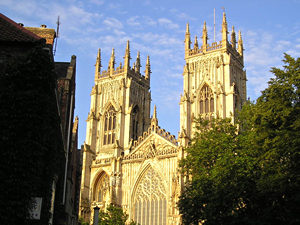 |
|
|
St Michael le Belfrey, next to the Minster, absorbing the same sunset as the Minster on the left – reflecting the same light in a different way, producing its own colour. Each enhancing the other. I think there's a message in there for all of us. |
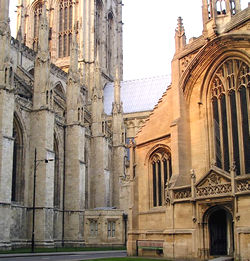 |
|
|
Standing underneath the Minster's west front, looking up. "the novelist Henry James usually tried to arrive
in English Cathedral cities at the day's end when the quiet Edwardian
dusk added drama to the scene. Old stonework, he observed, was at its
best "when the long June twilight turns at last to a deeper grey"."
My camera can't quite cope with actual twilight, and I didn't capture a June evening, but I hope these images of sunset on an August evening will help give some idea of what Henry James meant. When you see the Minster from a distance it's impressive, but when you stand close to it, on a summer's evening, and notice the detailed carving, it's even better. |
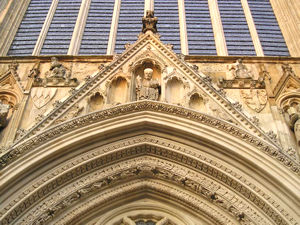 |
|
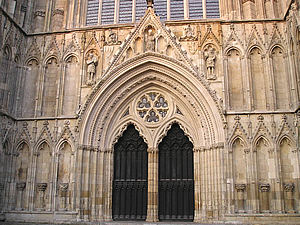 |
||
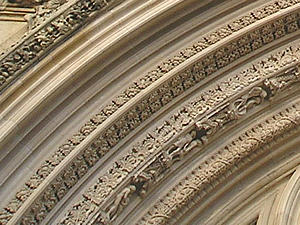 |
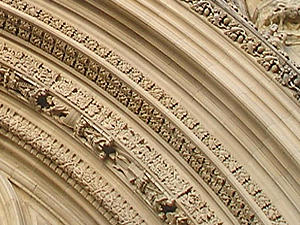 |
|
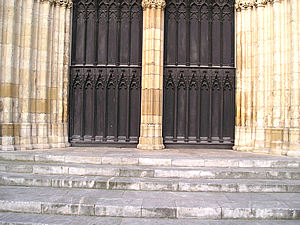 |
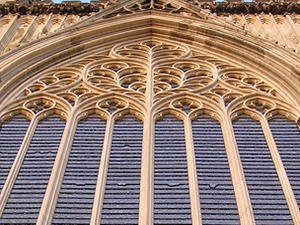 |
|
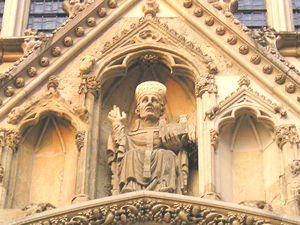 |
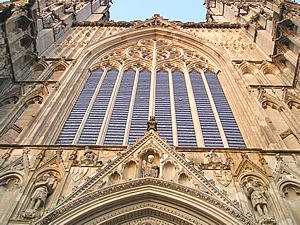 |
|
|
At the still point of the turning world. Neither flesh
nor fleshless; |
||